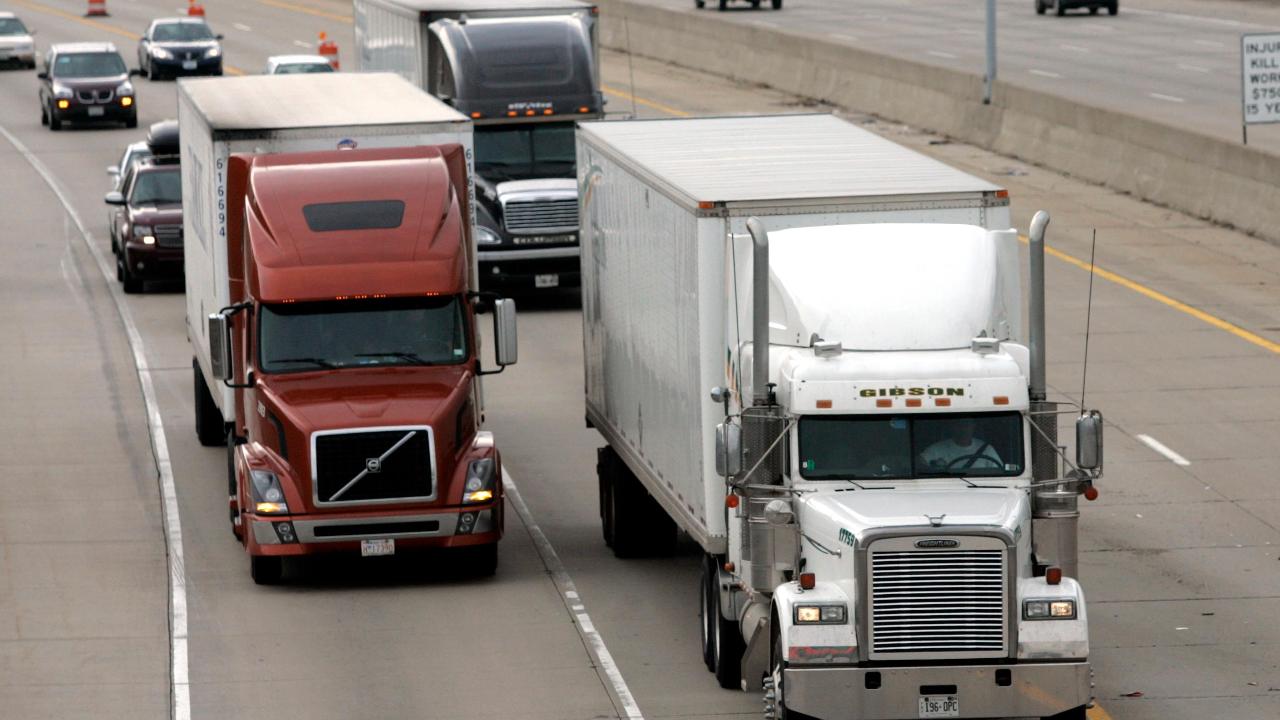How the truck driver shortage impacts you
The trucking industry may be in a crunch as companies struggle to fill driver positions, but it may ultimately be consumers that feel the pain as prices continue to rise.
“Shipping costs everywhere are going up,” Brian Fielkow, president of multimillion-dollar trucking and logistics company Jetco Delivery, told FOX Business. “In all honesty I don’t see that trend stopping. When you get a market this tight and you want to hire the very best people to represent your company … you have to pay, and that means you’ve got to charge more.”
Fielkow, who has implemented two rounds of wage increases for his drivers so far this year, said he is having “extremely transparent” conversations with his customers regarding increased freight costs. And while those companies “understand,” they are left with a dilemma: either pass those higher costs on to consumers or take the revenue hit.
The most high-profile change consumers may have noticed recently, Fielkow said, is Amazon raising Prime membership prices to $119 per year from $99 per year.
“With a shortage of truck drivers … Amazon can’t get there the last two miles as fast,” Burt Flickinger, managing director of Strategic Resource Group, said during a recent interview on “Mornings with Maria” on FOX Business.
In the first quarter, Amazon reported shipping costs increased 38% year-over-year, while sales climbed 18%. Freight costs also rose 20% at Coca-Cola as heightened demand outpaced available trucks, taking a slice out of revenue. The soft drink maker said it expected higher shipping costs to hurt its second-quarter results as well.
And for companies advertising “free shipping,” there’s no such thing, Fielkow said. Those prices have to be figured into the supply chain at some point.
“This is a society problem … shippers, consumers, retailers are paying the price because for so long it was all about squeezing prices on the trucking side and that made it very difficult to make a compelling case to attract new talent to the industry,” Fielkow noted.
Unfortunately for consumers, there appears to be no end in sight to the problem, either.
In 2016, the trucking industry was short more than 36,000 drivers, according to the American Trucking Associations (ATA), which expected that number to surpass 63,000 in 2018. By 2026, it could swell to 174,000.
An aging demographic, lack of qualified applicants and an inability to attract younger workers into the field have all contributed to the problem, at a time when the U.S. economy is healthy and demand is swelling.
In order to keep up with demand, the trucking industry would need to hire nearly 900,000 drivers through 2026, or about 90,000 each year, according to the ATA.




















